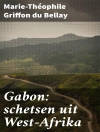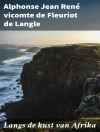In ‘Travels in the Great Desert of Sahara, in the Years of 1845 and 1846, ‘ James Richardson presents a vivid and detailed account of his journeys through one of the world’s most enigmatic landscapes. This narrative, rich in descriptive imagery, captures the stark beauty of the Sahara while delving into its cultural intricacies and the challenges faced by explorers of his time. Richardson’s literary style balances scientific observation with lyrical prose, evoking the majestic expanses and the arduous realities of travel in the 19th century. Furthermore, the book is situated within the broader context of Victorian exploration literature, where the allure of the ‘unknown’ was both a personal and a collective obsession of the era. James Richardson, a British explorer and surveyor, was driven by an insatiable curiosity about the uncharted territories of Africa. His experiences in the Sahara not only highlight his keen interest in geography but also reflect the broader imperial pursuits of knowledge and trade during this period. Richardson’s background in surveying and his interactions with various cultures during his travels inform his perspective, allowing readers to appreciate the complexities of the regions he traverses. For readers captivated by the allure of exploration and the profound landscapes of the Sahara, Richardson’s work serves as an essential contribution to the literature of adventure and anthropology. His intimate portrayal of the desert, combined with astute reflections on the human experience within it, makes this book a vital resource for both historical scholars and modern adventurers seeking to understand the legacy of exploration.
Про автора
James Richardson (1809–1851) was a British explorer known for his significant contributions to the geographical knowledge of North Africa during the mid-19th century. In his pursuit of understanding the landscapes and peoples of the region, Richardson undertook several daring expeditions, the most prominent being his ventures into the vast expanse of the Sahara Desert. His observational prowess and dedication resulted in the two-volume scholarly work, ‘Travels in the Great Desert of Sahara, in the Years of 1845 and 1846, ‘ where he meticulously documents the life, customs, and geography of the areas he traversed. His literary style was marked by an empirical approach, combining the narrative of his travels with keen ethnographic and geographical insights, reflective of the early Victorian exploratory endeavor. Richardson’s legacy today is connected with the nuanced reports he left behind, offering historians, anthropologists, and geographers a snapshot into the untamed Saharan ecosystem and the various societies that called it home. While his life was cut short due to a fatal illness contracted on his travels, Richardson’s contributions remain a cornerstone of Saharan studies. His work not only kindled contemporary interest in desert exploration but also influenced subsequent explorers and paved the way for future academic engagements with North Africa.












